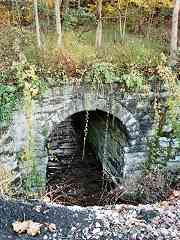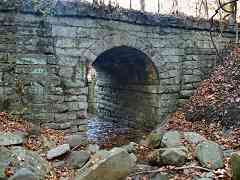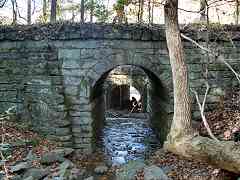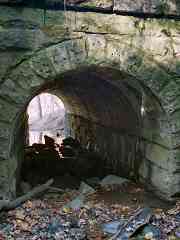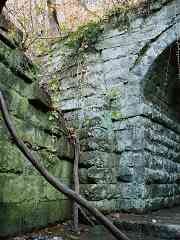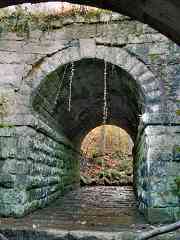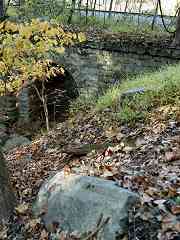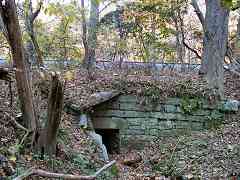|
A closer look reveals the crude construction style of this bridge. It
is unique in several ways. First, note the arched center portion is
sits within a V-shaped stone foundation, as if the bridge had been
constructed in two stages. By comparison to other B&O bridges of the
same era, the stone cutting is sloppier, and the stones fit with less
symmetry and care.
I've seen every stone arched bridge along the Old Main Line, and no other
is quite like this one. My guess is it was constructed by a different
crew, or perhaps as practice for other bridges such as the Patterson
Viaduct less than one mile downstream. If the latter is correct this
arched bridge may have been the very first completed for B&O,
predating the completion of even the Patterson and Carollton.
|
